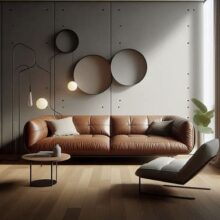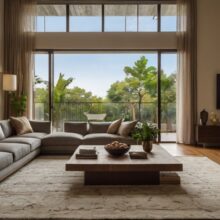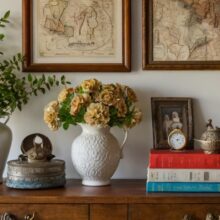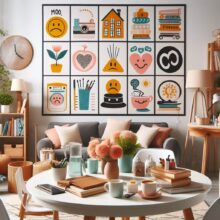How to Create a Cohesive Look Throughout Your Home

How to Create a Cohesive Look Throughout Your Home
Introduction: Have you ever walked into a home that feels perfectly put together, where every room flows seamlessly into the next? Creating a cohesive look throughout your home is about more than just aesthetics—it’s about crafting a harmonious environment that reflects your personal style and enhances functionality. In this article, we’ll explore the principles of cohesive design, practical tips for achieving it, and how to maintain consistency throughout your home. By the end, you’ll be ready to transform your space into a unified masterpiece.
Understanding Cohesive Design
Cohesive design refers to the intentional use of consistent elements—such as color, style, and materials—to create a unified look across different spaces. This approach ensures that your home feels connected and thoughtfully designed, rather than disjointed or haphazard. For example, a consistent color palette can unify an open-concept living and dining area, making the space feel larger and more inviting.
The Role of Consistency
Consistency is key to achieving a cohesive look. This doesn’t mean every room should look identical, but rather that there should be a common thread tying them together. For instance, repeating wood tones or metal finishes throughout your home can create a sense of continuity.
Principles of Cohesive Design
To create a cohesive look, start with a unified color scheme. Choose a primary color and one or two complementary shades, and use them consistently across different rooms. Recurring materials, such as wood, glass, or metal, can also help tie spaces together. Additionally, maintaining a consistent furniture style—whether it’s mid-century modern, rustic, or contemporary—can enhance the overall harmony.
Balancing Individuality and Cohesion
While cohesion is important, it’s equally crucial to allow each room to have its own personality. For example, a living room might feature bold artwork and vibrant accents, while a bedroom remains serene and minimalist. The key is to find a balance that reflects your unique style while maintaining an overall sense of unity.
Practical Tips for Achieving Cohesion
Start with a Mood Board: A mood board can help you visualize how different elements will work together. Gather paint swatches, fabric samples, and images of furniture to create a cohesive plan.
Choose a Central Theme: Whether it’s a specific color palette, design style, or material, having a central theme will guide your decisions and ensure consistency.
Repeat Key Elements: Repeating elements like colors, patterns, or materials across different rooms can create a sense of continuity. For example, use the same throw pillows in the living room and bedroom to tie the spaces together.
Transitioning Between Rooms
Transitional pieces, such as rugs, artwork, or lighting fixtures, can help create a smooth flow between rooms. For instance, a runner in the hallway that matches the living room rug can visually connect the two spaces.
Common Mistakes and How to Avoid Them
One common mistake is over-matching, which can make a space feel monotonous. To avoid this, vary textures and patterns within a consistent color scheme. Another mistake is ignoring flow, which can disrupt the sense of unity. Ensure that furniture placement and decor choices enhance, rather than hinder, the flow between rooms.
Neglecting Personal Style
While cohesion is important, it shouldn’t come at the expense of your personal style. Incorporate elements that reflect your personality, whether it’s a bold accent wall or a collection of unique decor pieces.
Trends and Innovations in Cohesive Design
Open-concept living continues to be a popular trend, emphasizing the importance of cohesive design. Monochromatic schemes, where different shades of the same color are used throughout the home, offer a sophisticated way to achieve unity. Biophilic design, which incorporates natural elements like plants and organic materials, is also gaining traction as a way to create a harmonious and calming environment.
Sustainable and Smart Design
As sustainability becomes a priority, many homeowners are opting for eco-friendly materials and energy-efficient solutions. Smart home technology, such as integrated lighting systems, can also enhance cohesion by allowing you to control the ambiance of your entire home with a single device.
Conclusion
Creating a cohesive look throughout your home is an art that requires careful planning and attention to detail. By understanding the principles of cohesive design, following practical tips, and avoiding common mistakes, you can transform your space into a unified and harmonious environment. Ready to get started? Discover your personal theme, experiment with key elements, and share your progress in the comments below!



